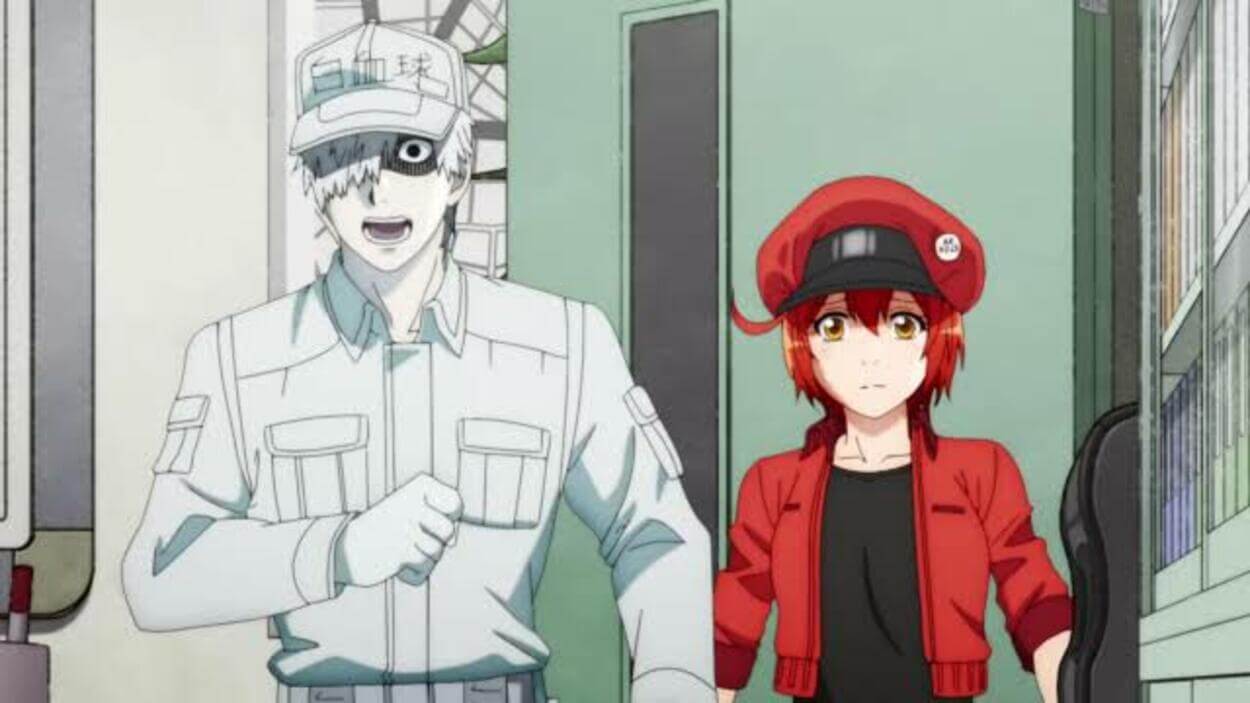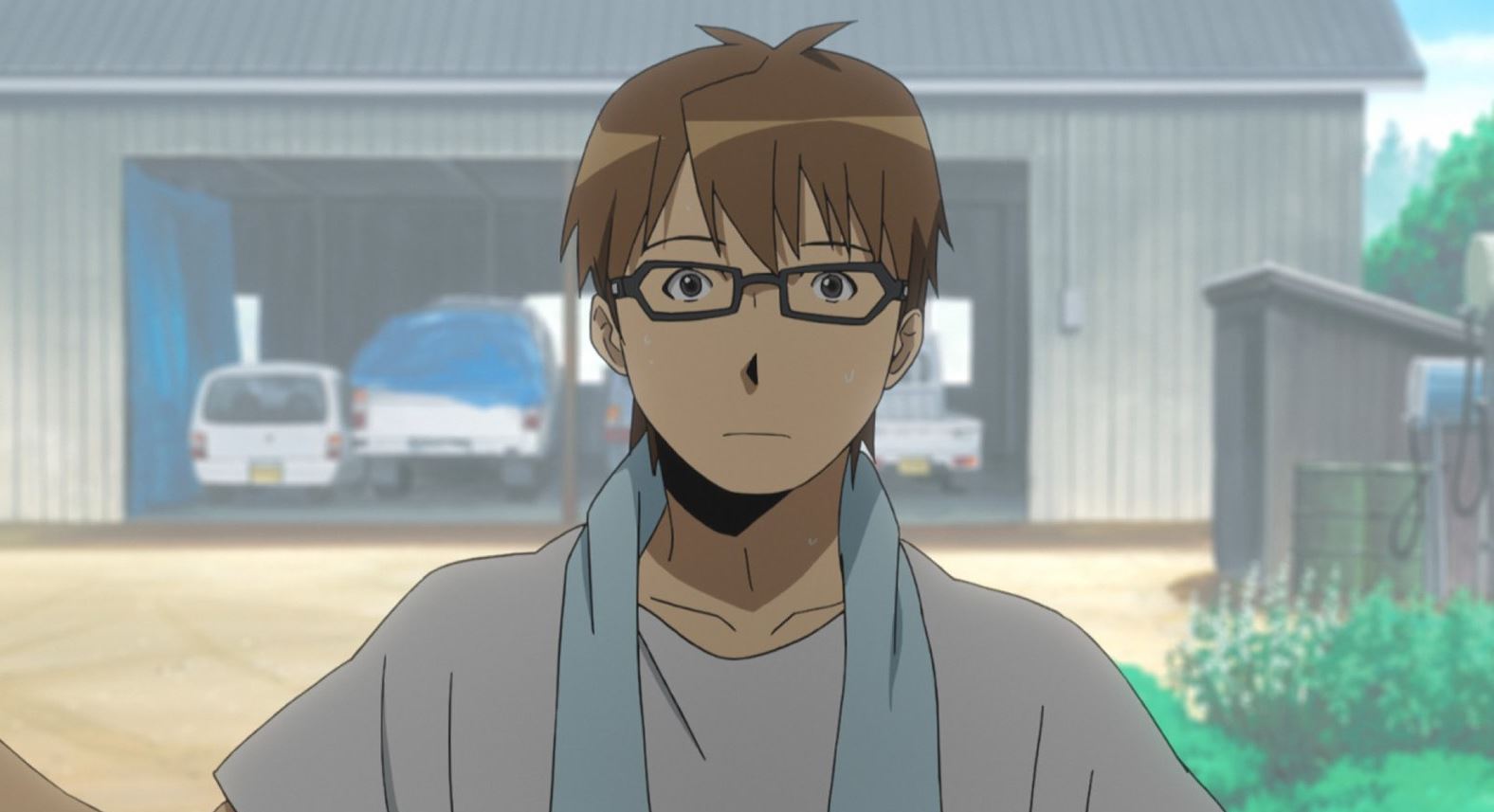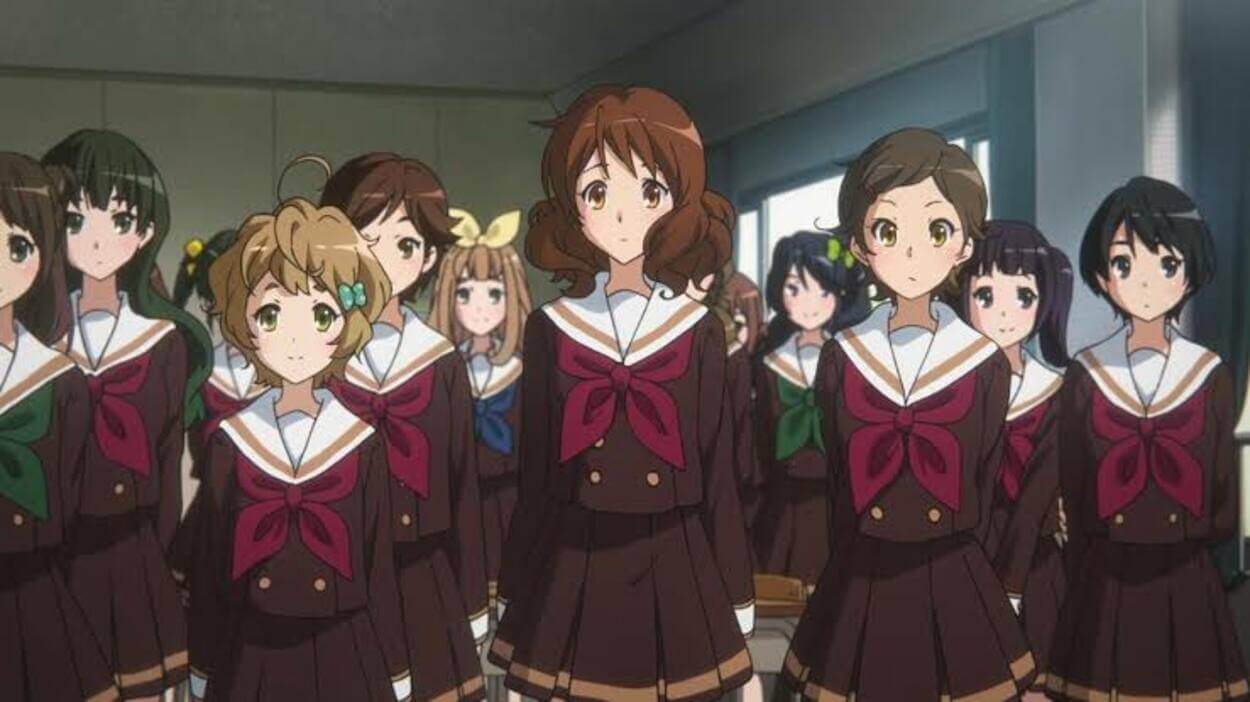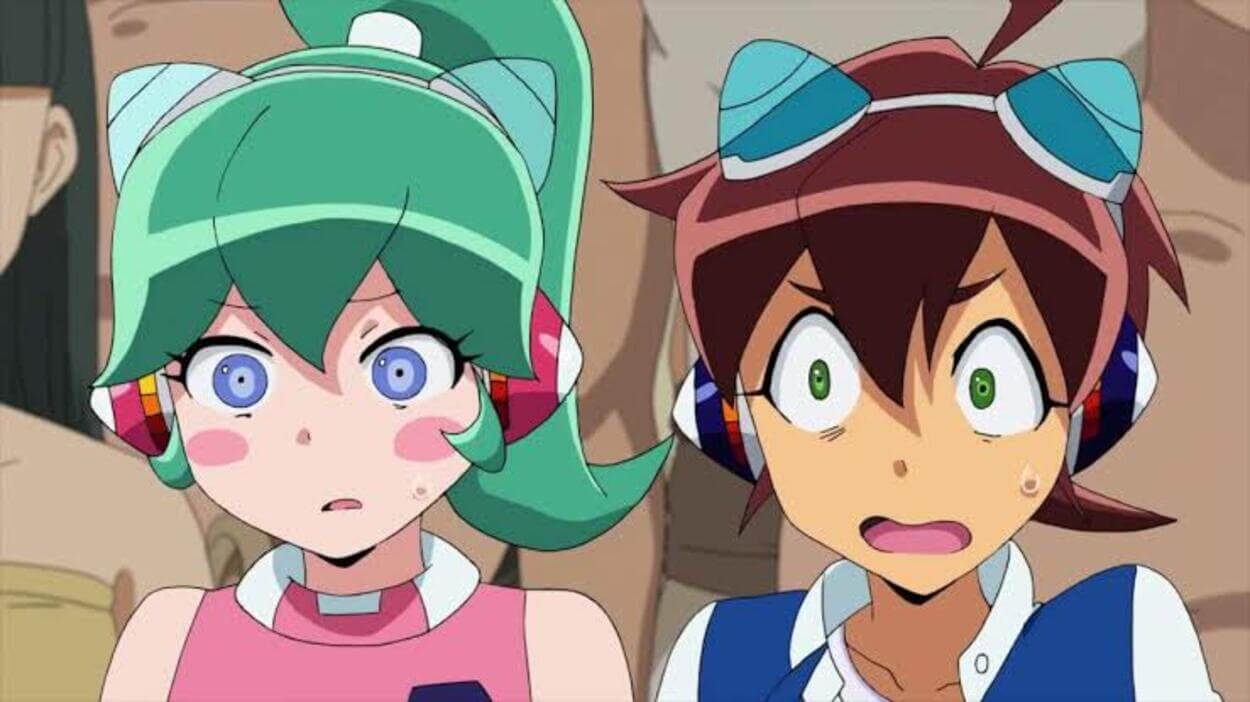Anime has expanded into the edutainment field and developed strategies for naturally imparting educational knowledge to viewers.
Although countless entertainment options vie for viewers’ attention, the Anime business usually gives the impression that there is an unending supply of material to discover.
Anime makes a concerted effort to support its most well-liked storytelling subgenres and produce continuously entertaining hits.
The variety of the medium allows for a wide range of special programs, including ones that actively educate the viewer.
Here is the table of the top 10 educational Animes with their lessons:
| Anime Name | Lessons |
| Cells at Work! | This Anime explains how our body’s cells maintain their health and enable it to function. In the show, we also get to know a lot of other cells and discover what functions they provide in the body as well as how they cooperate to fight off bacteria and viruses. |
| Heaven’s Design Team | The biology of genuine animals and their traits are taught in Anime. When you hear descriptions of particular creatures and are utterly taken aback when the animal is presented, it’s incredibly interesting! It also explains why fabled creatures are inconceivable. Every designer has a unique process. One enjoys designing beautiful animals, another enjoys making cuddly and adorable animals, yet another enjoys making tasty animals, yet another enjoys making creepy animals—even though she calls them “cute”—and so on. These examples illustrate design thinking concepts like testing and prototyping. |
| Code Black | This Anime shows you what happens when you don’t take care of your body by drinking, eating unhealthily, smoking, and other vices. The cells’ tireless efforts in a body that appeared to be beyond repair absolutely broke my heart, but what option do they have? If they give up, well, we all know what would follow. It really motivates you to look after your body better as well! |
| Silver Spoon | This Anime imparts knowledge on farming, agriculture, and livestock care. You have a greater understanding of where your food comes from as you discover it alongside the main character. Although it can often be quite elaborate, they never prepare or treat animals cruelly. |
| Dr. Stone | This Anime makes use of basic scientific principles. It teaches about chemical compounds and the formation of various minerals and metals. The phrase “do not try this at home” has also been used quite a bit throughout the show. The plot itself is both comedy and drama. I heartily endorse it. |
| Sound! Euphonium | The first season demonstrates the progress of the symphony band as their musical abilities advance and teaches about instrument handling and breathing techniques. The educational component of the second season starts to wane, and more bandmate turmoil is followed. This is a lovely viewing if you enjoy classical music. |
| Comical Psychosomatic Medicine | The myriad mental illnesses and pressures that affect humans, including panic attacks, sadness, and even sexual dysfunctions, are broken down by psychosomatic medicine. This shows teaches about mental illness, such as anxiety and depression, and how to cope with them. |
| Dagashi Kashi | Each episode of Dagashi Kashi not only provides the viewer with a humorous introduction to the distinctive characteristics of many popular Japanese candies, but it also frequently provides a gratifying history lesson and backstory that explains the individual “legend” for each treat. |
| Time Bokan | The most current installment of the franchise, Time Bokan 24, expertly crafts entertaining adventures that span the globe and engage in actual world history at the same time. Time Bokan expertly walks the balance between historical realism and comedic ridiculousness to keep its younger audience interested. |
| Ketsukigata-kun! | As they assist dispel many myths and misconceptions around the topic, different blood types are personified into cute mascots. The scope of this material may seem somewhat constrained, but Ketsuekigata-kun! has four seasons, each of which dissects contrasting material and attests to the show’s endurance. |
Have a look at this video for more details:
Let’s dive into the details of the top 10 educational Animes of all time:
What is Anime?
Anime is hand-drawn and computer-generated Japanese animation. Outside of Japan and in English, anime relates specifically to Japanese animation.
Anime (a term derived from a derivation of the English word animation) refers to all animated works produced in Japan and in Japanese, regardless of style or origin.
In comparison to Western animation, anime production often concentrates on the detail of settings and the usage of “camera effects” such as panning, zooming, and angle shots. Character dimensions and features can be highly different, with large and expressive eyes being a common distinguishing feature.
Attributes of Anime
Anime is distinguished from other kinds of animation by its art styles, animation methods, production, and process.
Visually, anime works display a vast range of art styles that vary according to creators, artists, and companies. While no particular aesthetic style dominates anime, they do share several characteristics in terms of animation technique and character design.
The use of limited animation, flat expression, the suspension of time, its thematic range, the actuality of historical figures, its complex narrative line, and, above all, a distinctive drawing technique, with characters distinguished by large and oval eyes, very defined lines, bright colors, and limited movement of the lips, distinguish anime.
Cells at Work!
There are two seasons and one special episode in this Anime. In my opinion, it is a very cute animation.
The human body resembles communities and factories since all of the cells have been given human characteristics.
The two primary characters are a red blood cell, which frequently gets lost while carrying oxygen or nutrients to various regions of the body, and a white blood cell, which frequently comes into contact with red and fights off invaders like bacteria.
Plot
The story is set in a city-sized representation of the human body, which contains about 37.2 trillion anthropomorphic cells that collaborate ceaselessly each day to operate their world.
They fight every day to get rid of and fend off harmful cells like bacteria and germs from infiltrating the body.
The characters of the story are AE3803, a ditsy red blood cell who is new to her profession, and U-1146, a cruel white blood cell that is a component of the immune system.
Red blood cells like AE3803 carry nutrition and oxygen throughout the body.

Heaven’s Design Team
13 episodes make up the workplace comedy series Heaven’s Design Team, which stands out due to its odd office setting—heaven.
The show explores the challenges faced by a group of heavenly-bound designers as they work to fulfill God’s creationist demands.
The situations in Heaven’s Design Team are humorous by nature since the heavenly designers make fun of real animals and the glories of nature.
There is always a method to Heaven’s Design Team’s madness thanks to the critical tone’s careful attention to factual information.
Plot
The Earth was created by Kami-sama, or “God,” who also endowed it with a variety of natural resources.
God was originally supposed to create the animals that would live on the earth, but the job was delegated to a group of imaginative people.
God typically assigns the team assignments to complete concepts for an animal with distinctive and eccentric attributes based on hazy specifications or design objectives.
His approved designs are turned into animals, while those that are rejected are returned to the creator for revision until he is happy.
Other times, the crew is free to design something new according to their own whims and aesthetic and physical preferences.
Shimoda, one of God’s angels, is in charge of managing the crew and submitting potential new animals to God for approval.
Cells at Work! Code Black
The same concept is used in a spin-off series, however this time the cells are in an unhealthy body.
This one is undoubtedly darker, bordering on horror or gore. I did like how they gender-shifted the anthropomorphized cells from the first season.
This, in my opinion, was done to demonstrate that it is not a third season but rather a separate series from the first.
Plot
The fictional Angels Memorial Hospital serves as the show’s main setting, where four first-year residents and their colleagues must care for patients in a congested, overworked emergency room with few supplies.
Silver Spoon
In contrast to all of the more heightened and surreal series out there, Silver Spoon is a sweet and cozy breath of fresh air.
Although Yugo’s coming-of-age journey in Silver Spoon concentrates on him adjusting to his new life at Oezo Agricultural High School.
It is also a celebration of the simple pleasures of farm life, livestock, and the labor-intensive processes involved in growing productive, long-lasting crops.
Similar to Yugo, Silver Spoon places the viewer in a position of natural concern over this indulgence in agriculture. This simply intensifies the series’ contagious enthusiasm.
Plot
Silver Spoon is a fictional account of a student’s day at the Oezo Agricultural High School in Hokkaido.
Yugo Hachiken is a student from Sapporo who enrolled there to escape his strict father’s high expectations.
He quickly discovers, however, that life at an agricultural school will not be as simple as he had imagined.

He envies his new classmates for already having clear goals for their lives and the pursuit of their dreams, as opposed to him, who has no intention of pursuing an agricultural job after graduating.
Dr. Stone
The Manga was initially turned into two seasons of this Anime. In the story, there is a mysterious light that appears one day and turns everyone on the globe into stone.
After 3,700 years, the main character Senku Ishigami awakens in a “stone world“ where he aims to use science to un-petrify everyone and restore civilization.
Plot
High school student Taiju Ooki, who has been holding affection for Yuzuriha Ogawa for five years, is now prepared to profess his love to her.
However, just as Taiju starts to confess, a bright green light envelops the planet, terrifying everyone on it and turning them all into stone.
A few millennia later, when Taiju awakens, he discovers that the modern period has totally vanished and that nature has regenerated during the time that people were silent.
Taiju only comes across one other living person in the stone world of statues: his science-obsessed friend Senkuu, who has been active for a few months.
Taiju discovers Senkuu’s ambitious plan to use science to usher in a total restoration of civilization.
Together, Taiju’s strength and Senkuu’s intelligence form a strong team that quickly discovers a way to resuscitate the petrified.
However, when his ideals are contested by those who awaken, Senkuu’s grand scheme is jeopardized. The cause of humanity’s petrification is still a mystery.
Sound! Euphonium
This Anime, which was initially adapted from Manga, features two seasons and multiple movies.
It chronicles the struggles a high school band faces as they devote their senior year of high school to national competition preparation.
Although the primary character is a first-year student named Kumiko Oumae who plays the brass wind instrument euphonium, the Anime ends up getting to know the majority of the symphonic band.
Plot
The Kitauji High School Concert Band Club was a championship-caliber organization that had earlier competed in national competitions, but after the club’s adviser changed, they were unable to take part in the qualifying competition.
However, the kids are constantly growing and gaining strength because of the tough guidance provided by the newly appointed adviser.
Some students prioritize studying above club activities and dispute over who gets to play solos. The long-awaited competition day finally comes, and the club triumphs in the preliminary round.

Comical Psychosomatic Medicine
The 20-episode comedy series Comical Psychosomatic Medicine keeps viewers interested with bite-sized, comedy-heavy, five-minute episodes.
It’s not unusual to laugh out loud the entire time while watching an episode but still walk away with something new.
Plot
Running a psychiatric clinic, Dr. Ryou Shinnai tries to educate the audience on a variety of topics related to mental health.
His dimwitted nurse Asuna succeeds in confusing the audience with her gaffes and misunderstandings, while the rest of the cast’s poor puns and antics further sabotage his explanations.
Dagashi Kashi
Even something as harmless as candy may be transformed into an educational and insightful experience thanks to Anime.
The two-season Anime series Dagashi Kashi is constantly comfortable and indulges in slice-of-life and mild rom-com cliches, but its love for Japanese food and delicacies is its biggest passion.

Plot
The Dagashi Kashi Anime loosely follows the Manga’s plot, which describes Kokonotsu Shikada’s existence as a rural resident in any order.
A quarrel between him and his father, Y Shikada, who wanted him to take over the family candy company, is the catalyst for everything.
She continues to persuade Kokonotsu to take charge up until Hotaru Shidare enters.
As the tale progresses, Kokonotsu encounters Saya End and T End who are conversing about life in the country, oftentimes involving candy.
The majority of the twelve episodes of the show focus on the history of candy and snacks.
Time Bokan
In the world of Anime, Tatsunoko Production is a household name, and many of its creations dominated the market in the 1960s and 1970s.
As a result, many Tatsunoko series have illustrious histories, and Yatterman gradually changed into the Time Bokan series, similar to the Power Rangers and Carmen Sandiego series.
Plot
Dr. Kieta, the creator of the Time Bokan, accidentally travels to the Paleozoic Era while testing out his time machine.
His young aide Tanpei and granddaughter Junko are shocked to see only a parrot in the cockpit with a sizable gemstone called Dynamond (a powerful and priceless jewel) when the time-space craft returns to the present.
The kids embark on a time-space quest with no obvious destination in their haste to locate the lost scientist before it’s too late.
But they are being pursued by an evil trio called as the Time Skeletons who want the Dynamond for themselves.

Ketsukigata-kun!
There is freedom in Anime short-form series that condense their narrative into just a minute or two.
For Ketsuekigata-kun! also known as A Simple Thinking About Bloodtype, this format turns out to be ideal.
Plot
The Korean webcomic “A Simple Thinking about Bloodtype,” which was remade in Japan, explores common blood type-related misconceptions in Japan and Korea using faceless characters who each symbolize a different blood type.
Conclusion
- Fans are fortunate to have access to such a wide variety of genres. With the aforementioned selections, you can choose to have fun, unwind, or learn something new.
- They are branded as such because they are made with audiences of all skill levels in mind. Their instructional substance is the main focus at the same time.
- It is a terrific idea to incorporate education into the presentation because it contributes to a lot of advantageous outcomes.
- Some of the educational Anime include Dr. Stone, The Silver Spoon, and Cells at Work!
Other Articles
- Top Philosophical Anime (Thought-Provoking)
- Does Watching Anime Affect Your Personality?
- Is Spirited Away Worth Watching?
Click here to view the visual Story version of this article.